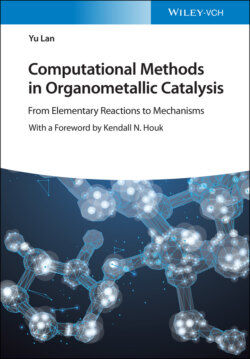Читать книгу Computational Methods in Organometallic Catalysis - Yu Lan - Страница 31
2.3.3 Polarization Functions
ОглавлениеA critical problem with a simple split‐valence basis set, such as 6‐31G, is that the flexibility of wavefunctions is insufficient to distort to the actual shape. Extending the basis set by including a set of functions that mimic the atomic orbitals with angular momentum one greater than in the valence space greatly improves the basis flexibility. These added basis functions are called polarization functions. For second and third periodic elements, adding polarization functions means adding a set of d GTOs; therefore, a basis set involving polarization functions for heavy atoms can be written as 6‐31G(d) or 6‐31G*. For hydrogen, polarization functions are a set of p functions. Therefore, a basis set involving polarization functions for all atoms can be written as 6‐31G(d,p) or 6‐31G**. As adding multiple sets of polarization functions has become broadly implemented, the use of asterisks has been abandoned in favor of explicit indication of the number of polarization functions within parentheses, that is, 6‐311G(2df,2p) means that two sets of d functions and a set of f functions are added to heavy atoms and two sets of p functions are added to the hydrogen atoms. The polarization functions are simply mathematical tools that allow to give the basis set more flexibility, and thus produce a better calculation.
